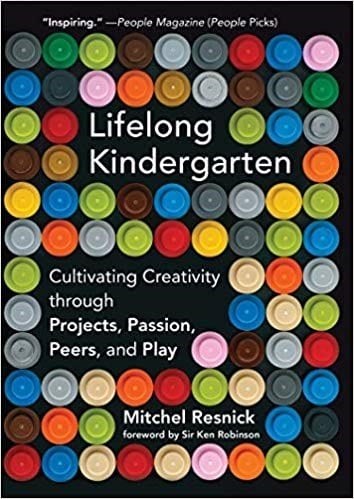Do we really want computerized systems controlling the learning process?
 When you look closely at what people are saying about personalized learning, it becomes clear that people are using the term in very different ways.
When you look closely at what people are saying about personalized learning, it becomes clear that people are using the term in very different ways.
The divergence in how people think about personalized learning became apparent to me a few years ago, when I was asked to give a keynote presentation at a conference.
I quickly found that the conference organizers were thinking about personalization very differently than I was. The presentations at the conference focused on new software systems designed to personalize the delivery of instruction to students.
The software periodically asked students questions, then customized the subsequent instruction based on how students responded to the questions. If a student gave an incorrect response, the system provided more instruction on the topic. For example, if a student made a mistake in converting inches to centimeters, the system might show an animation or video that illustrated strategies for converting between different units of measurement.
It’s easy to understand the appeal of these personalized systems, particularly when they’re compared with systems that deliver the same instruction to all students, regardless of what the students know or how they respond to questions. Who wouldn’t want a personal tutor that continually adapts to your individual needs? And with continuing advances in the fields of machine learning and artificial intelligence, the performance of these personalized tutoring systems is likely to improve in the future.
But I’m skeptical about personalized tutoring systems. One problem is that these systems tend to work only in subject areas with highly structured and well-defined knowledge. In these fields, computers can assess student understanding through multiple-choice questions and other straightforward assessments. But computers can’t assess the creativity of a design, the beauty of a poem, or the ethics of an argument.
If schools rely more on personalized tutoring systems, will they end up focusing more on domains of knowledge that are easiest to assess in an automated way?
Even more important is the issue of control. Do we really want computerized systems controlling the pace, direction, and content of the learning process? My vision of personalized learning is very different, giving the learner more choice and control over the learning process.
I’d like learners to have more control over how they’re learning, what they’re learning, when they’re learning, where they’re learning. When learners have more choice and control, they can build on their interests and passions, and learning becomes more personal, more motivating, more meaningful.
Some personalized learning initiatives give learners more control by allowing them to assemble their own “playlists” from collections of “learning modules.” Students get to decide when to work on each module and for how long. That’s a step in the right direction, but it’s still too constraining. In these initiatives, students have control over the order and pacing of activities, but no control over the activities themselves.
As my research group at the MIT Media Lab developed the Scratch programming website, we wanted to make sure that everyone could chart their own personalized paths. We designed the site to support all different types of projects (games, stories, animations) so that everyone could work on projects aligned with their own interests and passions.
We included a wide range of tutorials to provide many different pathways for getting started with Scratch. Want to animate your name? There’s a tutorial for that. Want to create a pong game? There’s a tutorial for that, too. Want to make an interactive birthday card for a friend? Yes, there’s a tutorial for that as well.
To help kids personalize their projects, we made it easy for them to import images and sounds from other websites. We also made it easy for them to “put themselves into the project” by using the cameras and microphones on their computers. We developed an easy-to-use paint editor so that kids could draw their own characters and backgrounds for their projects.
The Scratch approach to personalization stands in striking contrast to most learn-to-code websites, which introduce kids to coding through a series of puzzles to solve. Because the puzzles are standardized, the sites can track kids’ progress and offer personalized instruction and advice — but they provide kids with little or no opportunity for personal expression. The Scratch approach is diametrically opposed.
Because kids can create anything they want with Scratch, it’s difficult to automatically provide feedback or guidance — but the payoff comes in connecting with kids’ interests and catalyzing their imaginations.
Adapted from Lifelong Kindergarten: Cultivating Creativity through Projects, Passion, Peers, and Play. Published by the MIT Press, September 2017. Copyright 2017 Mitchel Resnick. All rights reserved.
Mitchel Resnick is a professor of learning research at the MIT Media Lab.
The post Do we really want computerized systems controlling the learning process? appeared first on The Hechinger Report.
We cover inequality and innovation in education with in-depth journalism that uses research, data and stories from classrooms and campuses to show the public how education can be improved and why it matters.
